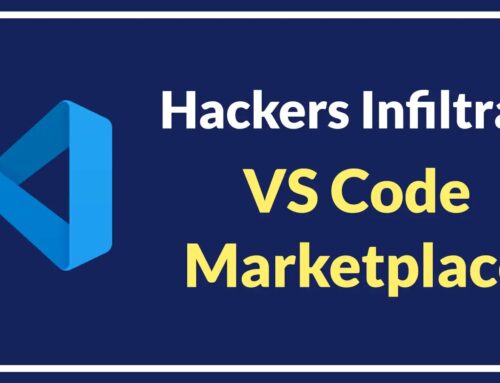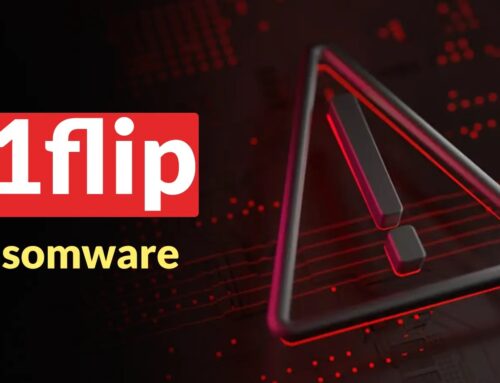
Critical ASUSTOR Vulnerability Let Attackers Execute Malicious Code with Elevated Privileges
A significant cybersecurity threat has emerged for users of ASUSTOR Network Attached Storage (NAS) devices. A critical vulnerability, identified as CVE-2025-13051, has been discovered within ASUSTOR’s backup and synchronization software. This flaw poses a severe risk, potentially allowing attackers to execute arbitrary malicious code with elevated system privileges. For organizations and individuals relying on ASUSTOR’s solutions for data management, understanding and addressing this vulnerability is paramount to maintaining data integrity and system security.
Understanding the ASUSTOR DLL Hijacking Vulnerability
The core of this critical issue lies in a specific type of attack known as DLL Hijacking. In simple terms, DLL (Dynamic Link Library) hijacking occurs when a legitimate application attempts to load a DLL, but an attacker has placed a malicious DLL with the same name in a location where the application will search for it first. The application then inadvertently loads and executes the attacker’s malicious code instead of the legitimate one.
In the context of ASUSTOR NAS devices, this vulnerability affects two widely used applications: the backup and synchronization software. Attackers cunningly exploit the way these applications search for and load necessary DLL files. By strategically placing a malicious DLL, they can trick the ASUSTOR software into executing their code, effectively gaining control over the system with administrative-level privileges.
The severity of this flaw cannot be overstated. Elevated privileges mean an attacker can perform a wide range of damaging actions, including:
- Data Theft: Accessing, exfiltrating, or encrypting sensitive data stored on the NAS.
- System Compromise: Installing ransomware, malware, or backdoors for persistent access.
- Service Disruption: Shutting down or tampering with critical NAS functions.
- Lateral Movement: Using the compromised NAS as a launchpad for further attacks within the network.
Affected Products and Scope of Risk
While specific versions are not detailed in the initial alert, the vulnerability is known to affect “two widely used ASUSTOR applications.” This broad description underscores the importance of a comprehensive review for all ASUSTOR users. Any outdated version of ASUSTOR’s backup and synchronization software may be susceptible to exploitation.
The risk is particularly high for systems that are internet-facing or accessible from external networks, as this increases the potential attack surface. However, even internal networks can be at risk if an attacker manages to gain a foothold through other means.
Remediation Actions
Immediate action is crucial to mitigate the risks associated with CVE-2025-13051. Users of ASUSTOR NAS devices should prioritize the following steps:
- Apply Updates Promptly: The most important step is to update your ASUSTOR NAS operating system (ADM) and all installed applications, especially the backup and synchronization software, to the latest available versions. Vendors typically release patches to address vulnerabilities as soon as they are discovered. Regularly check ASUSTOR’s official website or your NAS’s update panel for availability.
- Review Access Controls: Limit access to your NAS dashboard and shared folders. Implement strong, unique passwords for all user accounts and consider enabling two-factor authentication (2FA) where available.
- Network Segmentation: Isolate your NAS on a separate network segment or VLAN if possible. This can help limit an attacker’s lateral movement even if the NAS is compromised.
- Disable Unnecessary Services: Review and disable any services or features on your NAS that are not essential for its operation. Reducing the attack surface is a fundamental security practice.
- Regular Backups: Maintain a robust, offsite, and offline backup strategy. In the event of a successful attack, a clean backup is your most reliable path to recovery.
- Monitor Logs: Regularly review your NAS system logs for any unusual activity or suspicious access attempts.
Tools for Detection and Mitigation
While direct detection tools for this specific DLL hijacking vulnerability in ASUSTOR applications might be limited to vendor-provided updates, general cybersecurity practices and tools can aid in overall system hardening and incident response.
| Tool Name | Purpose | Link |
|---|---|---|
| ASUSTOR ADM Update Utility | Applies critical security patches and software updates directly to your ASUSTOR NAS. | ASUSTOR Download Center |
| Network Vulnerability Scanners (e.g., Nessus, OpenVAS) | Identifies known vulnerabilities on network-connected devices, including NAS systems. | Tenable Nessus / OpenVAS Home |
| Endpoint Detection and Response (EDR) solutions | Monitors and responds to threats on endpoints; important for client machines interacting with the NAS. | (Various vendors, e.g., CrowdStrike, SentinelOne) |
| Firewall/IDS/IPS systems | Monitors network traffic for suspicious patterns and can block malicious connections to the NAS. | (Various vendors, e.g.,pfSense, Suricata) |
Staying Proactive Against Future Threats
The discovery of CVE-2025-13051 serves as a stark reminder that no system is entirely immune to vulnerabilities. Manufacturers like ASUSTOR continuously release updates to address newly discovered security flaws. Users must cultivate a proactive security posture by:
- Subscribing to Security Advisories: Sign up for ASUSTOR’s official security advisories and newsletters to receive timely notifications about vulnerabilities and patches.
- Regular Security Audits: Periodically audit your NAS configurations and network security settings to ensure best practices are being followed.
- Educating Users: If multiple individuals access the NAS, ensure they are aware of security best practices, such as recognizing phishing attempts and using strong passwords.
Neglecting these updates can leave your valuable data and systems exposed to exploitation. Prioritizing security updates and maintaining a vigilant stance are essential for safeguarding your digital assets.





